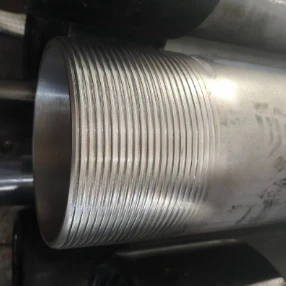- Afrikaans
- Albanian
- Amharic
- Arabic
- Armenian
- Azerbaijani
- Basque
- Belarusian
- Bengali
- Bosnian
- Bulgarian
- Catalan
- Cebuano
- Corsican
- Croatian
- Czech
- Danish
- Dutch
- English
- Esperanto
- Estonian
- Finnish
- French
- Frisian
- Galician
- Georgian
- German
- Greek
- Gujarati
- Haitian Creole
- hausa
- hawaiian
- Hebrew
- Hindi
- Miao
- Hungarian
- Icelandic
- igbo
- Indonesian
- irish
- Italian
- Japanese
- Javanese
- Kannada
- kazakh
- Khmer
- Rwandese
- Korean
- Kurdish
- Kyrgyz
- Lao
- Latin
- Latvian
- Lithuanian
- Luxembourgish
- Macedonian
- Malgashi
- Malay
- Malayalam
- Maltese
- Maori
- Marathi
- Mongolian
- Myanmar
- Nepali
- Norwegian
- Norwegian
- Occitan
- Pashto
- Persian
- Polish
- Portuguese
- Punjabi
- Romanian
- Russian
- Samoan
- Scottish Gaelic
- Serbian
- Sesotho
- Shona
- Sindhi
- Sinhala
- Slovak
- Slovenian
- Somali
- Spanish
- Sundanese
- Swahili
- Swedish
- Tagalog
- Tajik
- Tamil
- Tatar
- Telugu
- Thai
- Turkish
- Turkmen
- Ukrainian
- Urdu
- Uighur
- Uzbek
- Vietnamese
- Welsh
- Bantu
- Yiddish
- Yoruba
- Zulu
petroleum tubing coupling
The Importance of Petroleum Tubing Couplings in Oil and Gas Production
In the oil and gas industry, the efficient and safe transportation of hydrocarbons from the wellbore to the surface is a critical component of production operations. One of the essential elements in this process is the petroleum tubing coupling, a vital accessory that ensures the integrity and performance of the tubing string used in drilling and production activities. This article provides an overview of petroleum tubing couplings, their types, applications, and significance in the oil and gas sector.
What are Petroleum Tubing Couplings?
Petroleum tubing couplings are mechanical fittings that connect two sections of tubing or pipe in oil and gas drilling operations. They are typically made of high-strength steel alloys to withstand the extreme pressures and corrosive environments commonly encountered in drilling operations. The role of the coupling is to create a strong, leak-proof connection between segments of tubing, ensuring fluid can flow smoothly while maintaining structural integrity under varying conditions.
Types of Petroleum Tubing Couplings
There are several types of couplings utilized in the oil and gas industry, each designed to accommodate specific requirements based on the conditions they will face
1. Upset Couplings These are designed with a thicker wall and are used to provide increased strength and resistance to collapse and burst. Upset couplings are common in high-pressure applications.
2. Non-Upset Couplings These have a uniform wall thickness and are generally lighter and less expensive. They are suitable for lower-pressure applications.
3. Threaded Couplings These feature threaded ends that allow for easy connection and disconnection of tubing sections. They can be used in various applications but may require more careful handling to avoid damaging the threads.
4. Welded Couplings These are permanently joined by welding, providing a robust connection that is often used in situations where maintenance access is limited.
The choice of coupling type depends on factors such as the pressure and temperature requirements, the nature of the fluids being transported, and the specific design criteria of the drilling or production operation.
petroleum tubing coupling

Applications of Petroleum Tubing Couplings
Petroleum tubing couplings are utilized in various applications throughout the life cycle of oil and gas operations, including
- Exploration and Drilling In the initial stages of extracting hydrocarbons, couplings are essential for connecting the lengths of drilling tubing. This allows the drill to reach variable depths while maintaining the necessary pressure and structural stability.
- Production and Transportation Once hydrocarbons are extracted, couplings facilitate the transport of oil and gas through production tubing to the surface. Properly sealed couplings reduce the risk of leaks, thus protecting the environment and safety of workers.
- Well Servicing During maintenance or workover operations, tubing couplings may need to be disconnected and reconnected. The efficiency of these operations often relies on the robustness and reliability of the couplings used.
Significance in Safety and Efficiency
The significance of petroleum tubing couplings extends beyond mere connection; they are integral to the safety and efficiency of oil and gas operations. Any failure in a coupling can lead to leaks, which, in turn, may cause environmental contamination, regulatory penalties, and safety hazards for workers. Therefore, selecting high-quality couplings designed for specific operating conditions is paramount.
Furthermore, modern advancements in material science and engineering design have led to the development of superior coupling solutions that enhance performance while reducing the likelihood of failure. Innovations such as corrosion-resistant coatings and advanced sealing technologies continue to improve the reliability and longevity of petroleum tubing couplings.
Conclusion
In conclusion, petroleum tubing couplings are indispensable components of oil and gas production, playing a crucial role in ensuring the safe and efficient extraction and transport of hydrocarbons. The variety of coupling types available allows for tailored solutions that meet the demanding conditions of the industry. As the oil and gas sector grows increasingly focused on safety and sustainability, investing in high-quality, durable couplings will be essential for the continued success and integrity of operations worldwide.
-
Well Casing Extension Couplings – Applications and InstallationNewsJun.06,2025
-
Types of Crossover Subs in Drilling & CompletionNewsJun.06,2025
-
Key Features of High-Quality Tubing Pup JointsNewsJun.06,2025
-
Installation and Maintenance Tips for Steel Couplings for PipeNewsJun.06,2025
-
How to Select the Right Pup Joint for Oil & Gas OperationsNewsJun.06,2025
-
Applications of Stainless Steel Pipe CouplingsNewsJun.06,2025







